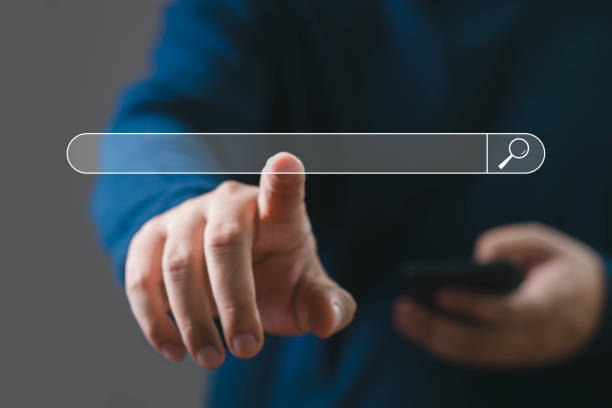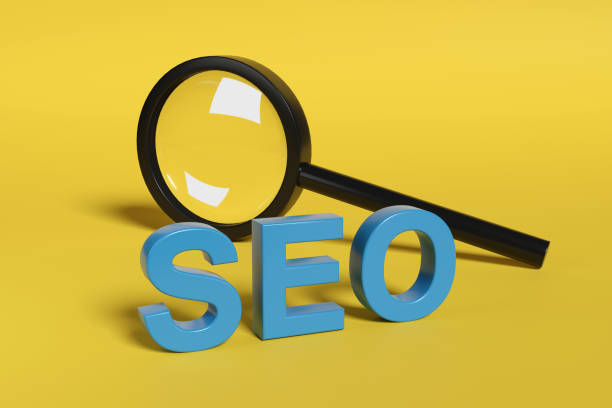Comprehensive Introduction to Off-page SEO and its Importance in Online Success

In today’s competitive internet world, merely having a beautiful website and high-quality content is not enough.
To be seen and attract traffic, you need more complex strategies, one of the most important of which is Off-page SEO.
#OffPageSEO refers to a set of actions performed outside your website to improve its ranking in search engine results.
These actions, unlike On-page SEO which focuses on optimizing elements within the site (such as keywords, site structure, and loading speed), focus on your website’s credibility and domain authority from the perspective of search engines.
Google and other search engines do not just look at a website’s content to evaluate its credibility; they also pay attention to how other websites and users refer to it in the online space.
The importance of Off-page SEO can be summarized in several key aspects.
First and foremost, backlinks, or links given from other websites to your site, are considered votes of confidence.
The more numerous and higher quality these backlinks are, the more credible and trustworthy search engines consider your site.
This directly impacts your site’s ranking in search engine results pages (SERP).
Second, Off-page optimization helps increase Brand Awareness.
When your brand name is mentioned on reputable websites, social networks, and online forums, you not only receive referral traffic but also increase your brand recognition.
This increased recognition can lead to more direct searches for your brand, which itself is a positive signal for search engines.
Third, improved click-through rates (CTR) and reduced bounce rates can also be indirect results of a successful Off-page SEO strategy.
For example, if your site ranks higher in search results, more users will see it, and the likelihood of clicks increases.
Overall, Off-page SEO is not just a tool for improving rankings but a comprehensive approach to building online credibility and authority for your business.
Without a strong strategy for Off-page SEO, even the best content may get lost among competitors and never reach its target audience.
This highlights the importance of careful planning and continuous execution of these activities to leverage the full potential of your online presence.
These actions are not limited to backlinks and include broader activities such as social media engagement, content distribution on other platforms, and online public relations, all of which help strengthen your position in search engine results.
Is your company’s website as professional and trustworthy as it should be? With specialized corporate website design by Rasawab, create an online presence that reflects your credibility and attracts more customers.
✅ Build a powerful and professional image for your brand
✅ Convert visitors into real customers
⚡ Get a free consultation now!
Backlink Building as the Heart of Off-page SEO

Among all factors influencing Off-page SEO, Backlink Building is undoubtedly the most important and impactful element.
Backlinks act as a vote of confidence from other websites for your content, indicating that other websites consider your content valuable and worthy of reference.
Search engines like Google consider these links as an indicator of your website’s credibility, authority, and relevance.
The more high-quality and relevant backlinks pointing to your site, the higher the likelihood of ranking in search results.
The quality of backlinks is far more important than their quantity.
A link from a reputable and highly trafficked website (with high domain authority) is much more valuable than dozens of links from low-value or spammy websites.
Low-quality links not only do not help your Off-page SEO, but they may also lead to penalties by Google’s algorithms.
There are different types of backlinks, each with a different impact on ranking:
DoFollow Links: These links pass SEO value from the referring website to your website and send a positive signal to search engines.
The main goal in link building is to acquire these types of links.
NoFollow Links: These links tell search engines not to follow the link and not to pass any value.
However, they can still generate referral traffic and help with branding.
Social media links, blog comments, and many news links are usually NoFollow.
UGC (User-Generated Content) Links: These links are created by users on platforms like forums or comment sections and are usually NoFollow.
Sponsored Links: These links indicate that the link was created due to sponsored or promotional content.
Understanding how these links work and their impact on Off-page optimization is crucial.
The goal should be to create a natural and diverse link profile that includes a mix of link types from reputable and relevant sources.
This link profile should reflect a healthy and sustainable Off-page SEO.
There are various approaches to acquiring backlinks, including creating valuable content that naturally attracts links (link bait), participating in other websites as a guest author, or fixing broken links.
Each of these methods requires time, effort, and a specific strategy to help improve your position in search results.
Additionally, it’s important to note that link building is an ongoing process that requires continuous monitoring and updating to always align with new Google algorithms and deliver the best results for your Off-page SEO.
Effective Strategies for Attracting High-Quality, Organic Backlinks and Strengthening Off-page SEO

After understanding the importance of backlinks, the next step is to know and implement effective strategies for acquiring them.
Attracting high-quality and organic backlinks not only helps improve your Off-page SEO but also increases domain authority and user trust.
Here are some of the most effective strategies:
1.
Create Valuable and Linkable Assets: This is one of the most fundamental and sustainable methods.
Producing very high-quality, in-depth, and unique content (such as comprehensive guides, case studies, infographics, tools, or original data) encourages other websites to naturally link to it.
This content must be so engaging and useful that webmasters and content creators are motivated to share it with their audience.
This type of content plays a significant role in improving your Off-page SEO.
2.
Guest Posting: This strategy involves writing articles for relevant and reputable websites in your field of activity.
In return, you can include one or two DoFollow links to your website within the article content or author’s biography.
Choosing high-quality and relevant websites is crucial to maximize link value.
3.
Broken Link Building: In this method, you examine reputable websites in your niche and identify broken links (links that lead to a 404 page).
Then, you inform the webmaster of that site and suggest replacing the broken link with a link to your own relevant and high-quality content.
This is a win-win strategy; you get a backlink, and the webmaster improves their site.
4.
Brand Mentions: Monitoring mentions of your brand name in the online space, even without a direct link, is important.
In many cases, you can contact the webmaster and request that your brand mention be converted into a link.
This activity is also important in the field of Off-page SEO.
5.
Utilize Online Directories and Listings: Registering in reputable and relevant directories for your business (such as local, industry, or commercial directories) can help create high-quality backlinks and increase brand awareness, especially for local Off-page SEO.
6.
Digital PR: Publishing news, press releases, or unique research studies can attract the attention of media outlets, blogs, and influencers, leading to media coverage and valuable backlinks from news sites and online magazines.
| Backlink Type | Description | Impact on Off-page SEO |
|---|---|---|
| DoFollow | Transfers SEO value from the source site to the destination. | High (Direct and Powerful) |
| NoFollow | Does not transfer SEO value, but provides referral traffic. | Medium (Indirect, Branding) |
| UGC (User-Generated Content) | Links created by users in comments, forums. Usually NoFollow. |
Medium (Traffic, Natural Signal) |
| Sponsored | Links resulting from sponsored or promotional content. | Low (Must be properly tagged) |
Paying attention to the quality and relevance of the websites from which you receive links is extremely important.
A natural and organic link-building strategy, which includes a combination of these methods, is the key to success in Off-page SEO.
The Role of Social Networks and Branding in Boosting Off-page SEO

While social networks do not directly impact search rankings through DoFollow links (as most of their links are NoFollow), they play a very important role in strengthening a website’s Off-page SEO.
Their impact is mostly indirect, acting through increased brand visibility, referral traffic, and social signals they transmit to search engines.
The first and most important impact of social networks on Off-page SEO is the increase in Brand Awareness.
The more your content is shared on social platforms and your brand name is discussed, the more users become familiar with it.
This familiarity can lead to direct searches for your brand name on Google.
Search engines, especially Google, consider direct brand searches as a strong signal of a brand’s popularity and credibility.
This increase in brand searches can positively affect your website’s ranking, even if direct links from social networks are not DoFollow.
The second role of social networks is to increase referral traffic to your website.
Although social media links do not directly transfer SEO value, they can drive users from social platforms to your website.
This traffic can lead to increased content engagement, reduced bounce rates, and increased time on site, all of which are positive signals for search engines.
Also, this traffic can lead to more content shares and ultimately attract natural backlinks from other websites.
If your content goes viral on social networks, the likelihood of news websites or bloggers linking to it significantly increases.
This is an important aspect of an Off-page optimization strategy.
The third aspect is strengthening Authority and Trust.
An active and positive presence on social networks, engaging with the audience, responding to comments and questions, and sharing useful content, helps build a positive image of your brand.
This social credibility, although indirect, shows search engines that your brand is active, relevant, and trustworthy.
This factor can play a role in algorithms like E-E-A-T (Experience, Expertise, Authoritativeness, and Trustworthiness) which Google increasingly values.
Consequently, professional social media management, as an integral part of modern Off-page SEO, must be taken seriously.
Therefore, planning for an active and targeted presence on various social platforms is part of a comprehensive Off-page SEO strategy.
These platforms serve as channels for content distribution, increasing visibility, and building a strong brand that ultimately helps improve your position in search results.
Are you tired of your company’s website not meeting your expectations? With Rasawab, design a professional website that truly represents your business!
✅ Increase attraction of new customers and sales leads
✅ Enhance your brand’s credibility and trust with your audience
⚡ Get a free website design consultation now!
Local SEO and its Connection with Off-page SEO

Local SEO and Off-page SEO are two important aspects of search engine optimization that, while seemingly different, significantly overlap and can help strengthen each other.
Local SEO focuses on optimizing a business’s online presence to attract local customers, while Off-page SEO generally deals with website authority on a broader level.
But how are these two related?
One of the most important elements of Local SEO is “Citations”.
Citations refer to mentions of your business’s Name, Address, and Phone number (NAP – Name, Address, Phone) in online directories, local websites, and review platforms (such as Yelp or Foursquare).
These citations, even if they don’t contain DoFollow links, send important signals to search engines that confirm your business’s existence and increase its local credibility.
These activities directly relate to the Off-page SEO section, as they occur outside your website and help search engines understand your business’s relevance to local searches.
The more high-quality and consistent citations there are, the more search engines trust your business’s information.
In addition to citations, Customer Reviews on platforms like Google My Business, Yelp, and TripAdvisor also play a vital role in Local SEO.
These reviews not only influence the decisions of potential customers but also show search engines that your business is active and popular.
Positive reviews and appropriate responses to them indirectly help strengthen Off-page optimization, as they add to the overall credibility and trustworthiness of your brand.
This goes beyond mere link building and includes online reputation management, which is an integral part of an Off-page SEO strategy.
Furthermore, local link building can also have a significant impact.
Acquiring backlinks from reputable local websites, such as the city’s chamber of commerce, local blogs, or local online newspapers, can help both your Local SEO and your general Off-page SEO.
These links not only pass SEO value but also show search engines that your business is rooted and active in its local community.
Ultimately, Local SEO activities, such as optimizing your Google My Business profile and attracting reviews, directly lead to strengthening your Off-page SEO dimensions.
This overlap demonstrates that planning for both aspects can lead to a comprehensive and powerful strategy for increasing your online visibility and helping you achieve a better position in both local and broader searches.
This reciprocal relationship between Local SEO and Off-page SEO further highlights the necessity of an integrated approach.
Analyzing Tools and Key Metrics for Competitor Off-page SEO Analysis

To develop a successful Off-page SEO strategy, competitor analysis is a crucial step.
This analysis allows you to identify competitors’ strengths and weaknesses, find new link-building opportunities, and learn from their mistakes.
Numerous SEO tools are available in the market that can assist you in this area.
Here, we discuss some of the most important tools and key metrics for analyzing competitor Off-page SEO.
1.
Ahrefs: This tool is one of the most comprehensive and powerful tools for backlink analysis.
With Ahrefs, you can fully examine the backlink profile of any website (including your competitors’).
This tool shows you where competitors are receiving links from (referring domain), the total number of backlinks, link types (DoFollow/NoFollow), anchor texts used, and the strength of the referring domain.
You can also track new and lost competitor links and identify broken links on reputable websites for recreated link-building opportunities.
2.
SEMrush: SEMrush is also an all-in-one SEO tool that offers powerful capabilities for backlink and Off-page SEO analysis.
This tool allows you to compare competitor backlinks, find link-building gaps (websites that have linked to your competitors but not to you), and assess your overall Off-page optimization performance compared to competitors.
3.
Moz Pro: Moz offers various tools, including Link Explorer, which is useful for backlink analysis.
Moz’s proprietary metrics like Domain Authority (DA) and Page Authority (PA), which are rated from 0 to 100, help you estimate the strength and credibility of a domain or page.
These metrics, while not directly used by Google, are useful indicators for comparing the strength of acquired links from an Off-page SEO perspective.
4.
Majestic: Majestic is another specialized backlink tool that provides two important metrics: Trust Flow and Citation Flow.
Trust Flow measures the quality of links based on proximity to reputable sites, while Citation Flow measures the quantity of links.
A high ratio of Trust Flow to Citation Flow indicates a healthy and high-quality backlink profile, which is very important in your Off-page SEO strategy.
Key metrics for analyzing competitor Off-page SEO:
- Total Number of Backlinks: Indicates the overall volume of links competitors have received.
- Number of Referring Domains: This metric is more important than the total number of backlinks, as it indicates the number of unique websites that have linked to your competitors.
The higher this number, the better the credibility. - Domain Authority (DA) / Domain Rating (DR): Metrics for estimating the strength and credibility of a domain.
Links from high DA/DR domains are much more valuable. - Trust Flow / Citation Flow: Metrics for measuring the quality and quantity of links.
- Anchor Texts Used: Analyzing the anchor texts competitors have received for their links can help you find suitable keywords for link building.
- Link Type (DoFollow/NoFollow): Examining the ratio of DoFollow to NoFollow links in competitors’ profiles.
By using these tools and key metrics, you can perform a comprehensive analysis of your competitors’ Off-page SEO strategies, discover new opportunities, and plan more effectively to increase your website’s visibility.
Provocative and Viral Content in Strengthening Your Off-page SEO

One of the most powerful strategies to strengthen Off-page SEO, especially in attracting natural links and increasing brand mentions, is to create provocative and viral content.
Viral content refers to content that is quickly and widely shared by users in the online space (especially social networks).
This type of content has high potential for attracting natural backlinks (links created without direct request) which are highly valuable from the perspective of search engines.
Provocative content, as its name suggests, makes the audience think, challenges them, or prompts an emotional reaction.
This type of content usually includes controversial topics, new and unconventional perspectives, or shocking facts.
The main goal of these contents is to stimulate discussion and encourage sharing.
When content is widely shared, it not only brings direct traffic to your website but also increases the likelihood that bloggers, journalists, or other websites will link to it.
These organic and natural links are the most important component in improving Off-page SEO.
To create provocative and viral content that helps strengthen your Off-page SEO, you can pay attention to the following tips:
1.
Create Infographics and Engaging Visual Content: Visual content is easily shared and can serve as an excellent “link bait”.
If your infographic contains new information or a unique perspective, the likelihood of it being linked to is very high.
2.
Publish Case Studies and Original Research: Providing original, first-hand data and findings positions your website as a reputable and specialized source.
This type of content is highly citable and can attract many links from academic, news, and specialized websites.
This directly adds to your Off-page SEO authority.
3.
Offer Comprehensive and In-depth Guides and Tutorials: Comprehensive guides that thoroughly cover a topic and create practical value for users become references, and the likelihood of linking to them increases.
4.
Entertaining or Emotional Content: Content that evokes humor, surprise, anger, or joy has high viral potential.
This type of content is usually very popular on social networks and can lead to increased brand mentions and ultimately link building.
| Content Type | Characteristic | Impact on Off-page SEO |
|---|---|---|
| Infographics and Visual Content | Easy to understand, easy to share, high visual appeal. | Attracts natural backlinks (Visual Link Bait) |
| Original Studies and Research | Unique information, data-driven, citable source. | Increases credibility, attracts links from specialized and news sites |
| Comprehensive Guides and Tutorials | Useful, practical, problem-solving. | Becomes a reference, attracts links from blogs and educational platforms |
| Entertaining/Emotional Content | Evokes emotions, humorous, unexpected. | High viral potential, increases brand awareness and referral traffic |
Also, Content Promotion after its production is of great importance.
Simply creating great content is not enough; you must promote it on social networks, through email marketing, and in collaboration with influencers to reach a wider audience.
This proactive approach helps you maximize the viral potential of your content and ultimately achieve a successful strategy in the field of Off-page SEO.
Risks and Challenges of Black Hat Off-page SEO and Ways to Avoid Them

In the path of Off-page SEO optimization, similar to other SEO areas, there are temptations to use illegal and unethical methods referred to as “Black Hat SEO”.
These methods are designed to deceive search engine algorithms to gain quick and unfair rankings.
However, using these techniques carries serious risks and can lead to severe penalties by search engines, including ranking demotion or even complete removal of the website from search results.
One of the most common Black Hat SEO methods in Off-page SEO is the use of Private Blog Networks (PBNs).
In this method, an SEO specialist creates a set of self-owned websites whose main purpose is solely to link to the main website to improve its ranking.
These websites usually have low quality and no real topical connection to the main site.
Google strictly fights against PBNs and, if identified, penalizes websites that have received links from them.
Another method is Buying Backlinks.
Although it may seem like a quick way to acquire links, Google explicitly considers buying and selling links for rank manipulation illegal.
Purchased links are usually placed on irrelevant sites or link farms and are easily identified by Google’s algorithms.
This severely damages the credibility of your Off-page optimization.
Link Farms and Excessive Link Exchange are also among the Black Hat methods.
Link farms are a collection of websites built solely for exchanging links with each other, without having valuable content.
Excessive link exchange also occurs when two or more websites link to each other solely for the purpose of increasing rankings and without regard for topical relevance.
These activities are also quickly detected and penalized by Google.
Comment Spam and creating low-quality links in forums or blog comment sections are also common and harmful Black Hat SEO methods in Off-page SEO.
These links usually have no SEO value and can harm your link profile.
Ways to avoid risks and challenges in Off-page SEO:
- Focus on Quality, Not Quantity: Always look for links from reputable, relevant, and high-authority websites.
One high-quality link is better than hundreds of low-quality links. - Natural and Organic Link Building: Produce excellent content that naturally attracts links.
Participating in relevant online communities and answering questions can create natural link-building opportunities. - Avoid Buying Links: Never buy links or participate in PBN networks.
- Diversity in Anchor Text: Use diverse and natural anchor texts.
Overuse of exact match anchor texts can be a Black Hat signal. - Link Profile Review: Regularly review your backlink profile to identify spammy or harmful links and disavow them using Google’s Disavow tool.
Adhering to White Hat SEO principles and focusing on creating real value for users not only protects you from penalties but also helps build a healthy and sustainable link profile that will yield better long-term results for your Off-page SEO.
Does your current website convert visitors into customers or drive them away? Solve this problem forever with professional corporate website design by Rasawab!
✅ Create powerful credibility and branding
✅ Attract target customers and increase sales
⚡ Get a free consultation now!
Measuring and Reporting Off-page SEO Results

Measuring and reporting Off-page SEO results is a crucial step in any search engine optimization campaign.
Without performance measurement, you cannot understand which strategies have been effective, where you need improvement, and how your efforts contribute to overall business goals.
This process allows you to justify your investments and adjust your future strategies based on real data.
1.
Key Performance Indicators (KPIs) for Off-page SEO:
Number of Referring Domains: This is one of the most important metrics.
An increase in the number of unique websites linking to you indicates growth in your domain authority and Off-page SEO strength.
Link Quality: The sheer number of links is not enough.
You must also assess the quality of referring domains (e.g., through Domain Authority / DR).
Higher quality links have a greater impact.
Referral Traffic: Monitor the amount of traffic coming to your website from backlinks.
This shows that your links have been effective not only from an SEO perspective but also in attracting real users.
Keyword Rankings: The ultimate goal of Off-page SEO is to improve keyword rankings.
By increasing domain authority through backlinks, your rankings for relevant keywords are expected to improve.
Increase in Domain Authority / Domain Rating: These metrics, provided by SEO tools (such as Moz and Ahrefs), show you how your overall domain strength has changed over time.
Brand Mentions: Monitoring the extent of your brand name’s mention in the online space (even without a direct link) can be an indicator of increased brand awareness, which indirectly helps Off-page SEO.
2.
Measurement and Reporting Tools:
Google Search Console: This free Google tool provides valuable information about your backlinks (external and internal) and keyword performance.
It also helps you identify suspicious links.
Google Analytics: For monitoring referral traffic, user behavior after entering the site (time on page, bounce rate), and conversions (sales, sign-ups).
This data shows you how useful and effective the traffic from Off-page SEO has been.
Paid SEO Tools (Ahrefs, SEMrush, Moz, Majestic): As mentioned earlier, these tools are essential for deeper backlink profile analysis, competitor monitoring, and tracking advanced metrics like DA/DR and Trust Flow.
3.
How to Report:
Off-page SEO reports should be regular (monthly or quarterly) and include the following:
- A summary of progress and achievements during the reporting period.
- Display of changes in important KPIs (number of referring domains, DA/DR, keyword rankings).
- A list of new and high-quality backlinks acquired.
- Competitor analysis and your position compared to them.
- Challenges and opportunities ahead.
- Planning for future actions based on findings.
By accurately measuring and transparently reporting, you can not only prove the impact of your Off-page SEO but also continuously optimize your strategies to achieve the best results.
This continuous process of measurement and improvement is the key to sustainable success in Off-page SEO.
The Future of Off-page SEO with Search Algorithm Changes

The world of SEO is constantly evolving, and search engine algorithms, especially Google’s, are being updated at a high pace.
These changes directly impact Off-page SEO strategies, and understanding these developments is essential for maintaining and improving website rankings.
The future of Off-page SEO is increasingly moving towards quality, relevance, and user experience-centric approaches, moving away from purely quantity-based methods.
One of the most important changes that has affected Off-page SEO and will continue to do so in the future is Google’s emphasis on E-E-A-T metrics (Experience, Expertise, Authoritativeness, and Trustworthiness).
In the past, simply having a large number of backlinks could lead to higher rankings.
But now, Google is more interested in links from sources that are not only authoritative but also have real expertise and experience in their subject area.
This means that attracting links from expert websites, thought leaders, and sources whose content is written by specialists will be of higher importance.
This approach deepens the concept of Off-page SEO.
Helpful Content Updates are another key change.
Google increasingly prefers content that is useful and valuable to users, not just optimized for search engines.
This also affects link building: useful and high-quality websites are more inclined to link to useful and valuable content.
Therefore, the Off-page optimization strategy should revolve around creating and promoting content that genuinely addresses user needs and solves their problems.
Emphasis on Brand Signals and Mentions is also increasing.
Even if your brand name is mentioned without a direct link on news websites, forums, or social networks, Google considers this a positive signal of popularity and credibility.
This means that digital public relations activities, participation in online communities, and building a strong brand will increasingly help your Off-page SEO.
This expansion in the definition of Off-page SEO reflects its evolution.
Diversity in Link Profile will also remain an important factor.
Google looks for a natural link profile that includes various types of links (from blogs, news sites, directories, forums, etc.).
A link profile that only receives links from one type of source may seem suspicious.
In the future, Off-page SEO will increasingly resemble a “digital public relations” process where the goal is to build genuine relationships with webmasters and content creators and acquire natural, high-quality links through creating value and expertise.
It is no longer enough to simply “build links”; rather, one must “build relationships” that naturally attract links.
Webmasters should seek opportunities to collaborate with websites and brands that are truly reputable and expert in their field and can offer unique and valuable content.
This paradigm shift guides Off-page SEO towards a more ethical and sustainable approach that will lead to better long-term results for online visibility.
Frequently Asked Questions
| Question | Answer |
|---|---|
| What is Off-Page SEO? | Off-page SEO refers to a set of activities and methods performed outside your website to improve its ranking in search engines, such as backlink building. |
| Why is Off-page SEO important for a website? | Off-page SEO shows search engines that your website is credible, popular, and trustworthy, which helps increase domain authority and ranking. |
| What is the most important factor in Off-page SEO? | Backlinks, or links from other sites to your site, are the most important factor, especially if they are from reputable sites. |
| What are the characteristics of a quality backlink? | A quality backlink comes from reputable sites (with high authority), is relevant to your site’s topic, and has appropriate (natural) anchor text. |
| Do social networks play a role in Off-page SEO? | Yes, sharing content on social networks can help increase indirect visibility and traffic and send positive social signals to search engines. |
| What is PBN and is it recommended? | PBN (Private Blog Network) is a network of private websites used to build backlinks to the main site. Google considers this method spam, and its use is strictly prohibited and can lead to penalties. |
| How is Natural Link Building done? | By producing valuable and shareable content, connecting with bloggers and influencers, and attracting media attention. |
| What is Anchor Text in a backlink? | It is the text within which the link is placed. Using diverse and keyword-relevant anchor texts appears more natural and helps with SEO. |
| How is Local SEO related to Off-page SEO? | Local SEO includes off-site activities such as listing on Google My Business, local directories, and getting online reviews, which help businesses appear in local search results. |
| How can I check competitor backlinks? | You can use tools like Ahrefs, Semrush, or Moz to analyze competitor backlink profiles and identify new link-building opportunities. |
And other services of Rasa Web advertising agency in the field of advertising
Smart Marketplace: Revolutionize SEO ranking improvement with Google Ads management.
Smart Content Strategy: A creative platform for improving customer behavior analysis with marketing automation.
Smart Marketing Automation: A professional solution for customer behavior analysis focusing on custom programming.
Smart Advertorials: An effective tool for campaign management with SEO-driven content strategy.
Smart Sales Automation: A fast and efficient solution for increasing click-through rates with a focus on marketing automation.
And over a hundred other services in the field of internet advertising, advertising consultation, and organizational solutions
Internet Advertising | Advertising Strategy | Advertorials
Sources
Article: Powerful Off-page SEO for Increased Visibility
Blog: What is Nofollow Link Building?
Tutorial: Correct Backlink Building in Off-page SEO
Resources: Google Algorithm Changes in SEO 2023
✨ With Rasawab Afarin, your business soars powerfully in the digital world. From responsive website design to search engine optimization, we are by your side to ensure a powerful and lasting online presence.
📍 Tehran, Mirdamad Street, Next to Central Bank, Southern Kazerun Alley, Ramin Alley No. 6



